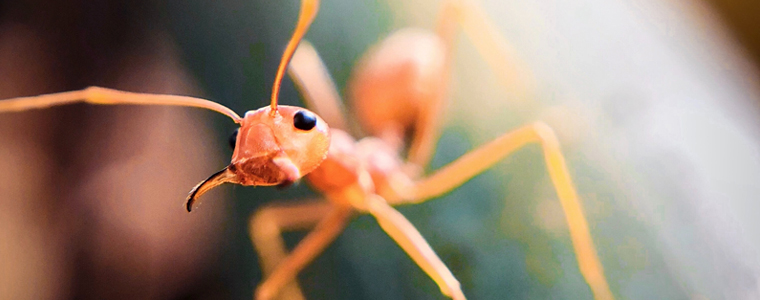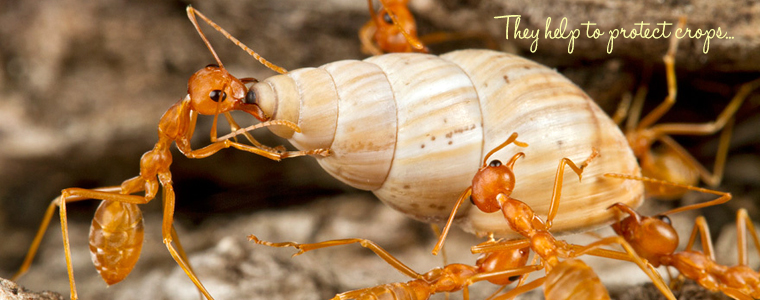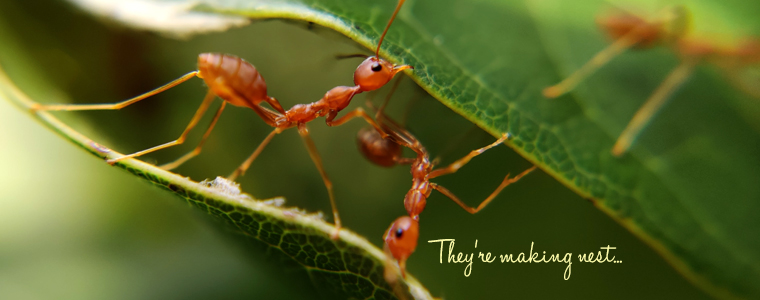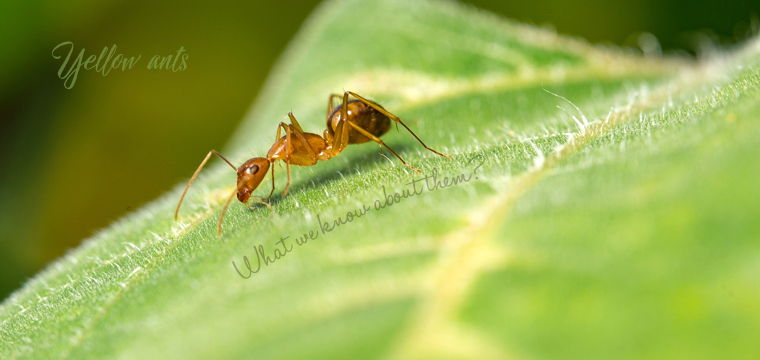The yellow ant has another name, that is Oecophylla smaragdina, belonging to the hymenoptera, formicidae family and it has pale yellow. They nest in leaves that are bunched and stuck together by silk of the ant larvae so they are also known as weaver ants.

They are distributed in Asia and Australia. In Vietnam, due to the yellow abdomen, so it is called the … yellow ant. The yellow ant nest usually includes large worker ants, small worker ants, male ants and queen ants. Yellow ants are present year round in orchards with very high density, but the number still fluctuates following time of the year, the yellow ant nest appears most at the beginning of the rainy season.
The role of yellow ants in agriculture
Developing and nurturing yellow ants in orchards is an intelligent biological solution that replaces pesticides and protects the environment, creating a healthy production habit, in line with the natural agriculture trend. Thanks to the characteristics of yellow ants, the extermination of pests on fruit trees has become very simple.

Yellow ants are “warlike” creatures
The yellow ant has been assessed as a beneficial natural species of the garden because of its ability to control and kill harmful insects. They organized attacks in groups.
The yellow ants have very effective control properties and they are an obsession for many insects of the group of stink bugs, aphids, Citrus mealybug, leaf-eating pests, stem-borer and squeeze fruit worms,…

The yellow ants quickly tackle the Asian citrus psyllid, an intermediary insect that transmits greening disease – Citrus Vein Phloem Degeneration disease on citrus fruits such as oranges and grapefruit. Greening disease causes leaf yellowing of tissues, green veins, small fruits, scoliosis, many small grains, abnormal development.
Yellow ants also “eat” the Citrus Leafminer. Bees and flies parasitic on Citrus Leafminer often proliferate, but if yellow ants exist in the garden, they will not mean anything but just a meal for the ants to devour and “sip”.
In particular, another terrifying leaf pest in orchards is the spider, especially the golden spider, but the golden spider is “terrified” of yellow ants. Many growers who grow citrus realize that when yellow ants start growing in the garden, at the same time, the spider has decreased significantly. Maybe they have migrated or were killed by yellow ants … However, weaver ants do not eat the kind of worm that hairy or spiny. Ants are so warlike that they are ready to engage humans if we touch their habitat, the bite causes minor damage but is sore because of an acid known as formic acid from yellow ants. I’m sure that each of us must have experienced the feeling of a yellow ant biting or even worse, stepping on the nest of ants…
How to raise yellow ants in your orchards
Yellow ants prefer to live in citrus orchards, mango trees, plums, guavas, peaches, etc. and many other woody plants.
In some large fruit-growing areas, farmers brought the yellow ant nest to tie it in a tree in the citrus orchard and then bridging from tree to tree to let the ant climbing among. You should collect new ant nest, with an average size of 20cm or more, made up of 2 layers of leaves, because these nests are more likely to have Queen ant.

Black ants that make citrus become dry, hard and dehydrate. They also fight with yellow ants, so we must kill the black ants before releasing the yellow ants. Yellow ants are even in conflict with the yellow ants that exist before in the area, they are willing to fight their species if that is necessary. The yellow ants slaughter each other and when fighting, they secrete formic acid, which causes the branches to become tanned and then dry or die, so you must kill the old ants before releasing new ants. If it is not possible to kill all the yellow ants exist before, you must drop the new ants from the top to suppress the old ants move to bottom of the tree.

To solve the ant biting each other, when collecting ants, it is advisable to collect the nests in the same tree and put in the same bag so that these ants are in the same group. The queen ants, male and worker ants all have the highest densities from July to October, which is also a good time to collect ants. Drop at least 2 groups into the third and fourth quarters of the tree.
In the dry season, the ants often leave because of lack of food, so you must feed the ants by hanging chicken, duck, fish head … on the tree. But do not feed regularly, you should feed every few months because when they eat a lot they will get lazy and refusing to hunt. At this point, they are just like humans.
In order for the ants to grow and spread evenly throughout the garden, it is necessary to create a path for the ants to move from tree to tree to hunt as well as nest by stretching rope or stretching branch from tree to tree so that they can follow to expands the range of encroachment.

Yellow ants can be adapted to all types of gardens: monoculture, intercropping and mixed garden. However, in orchards such as plums, mangoes, toads or pitchers and cotton on the ditches bank around the gardens, the yellow ant populations are more.
Yellow ants are extremely sensitive to pesticide, so minimize chemical use. To nourish the ants effectively, it is important to know the density of the ants is sufficient, dispersed evenly in the garden and stable throughout the year.



